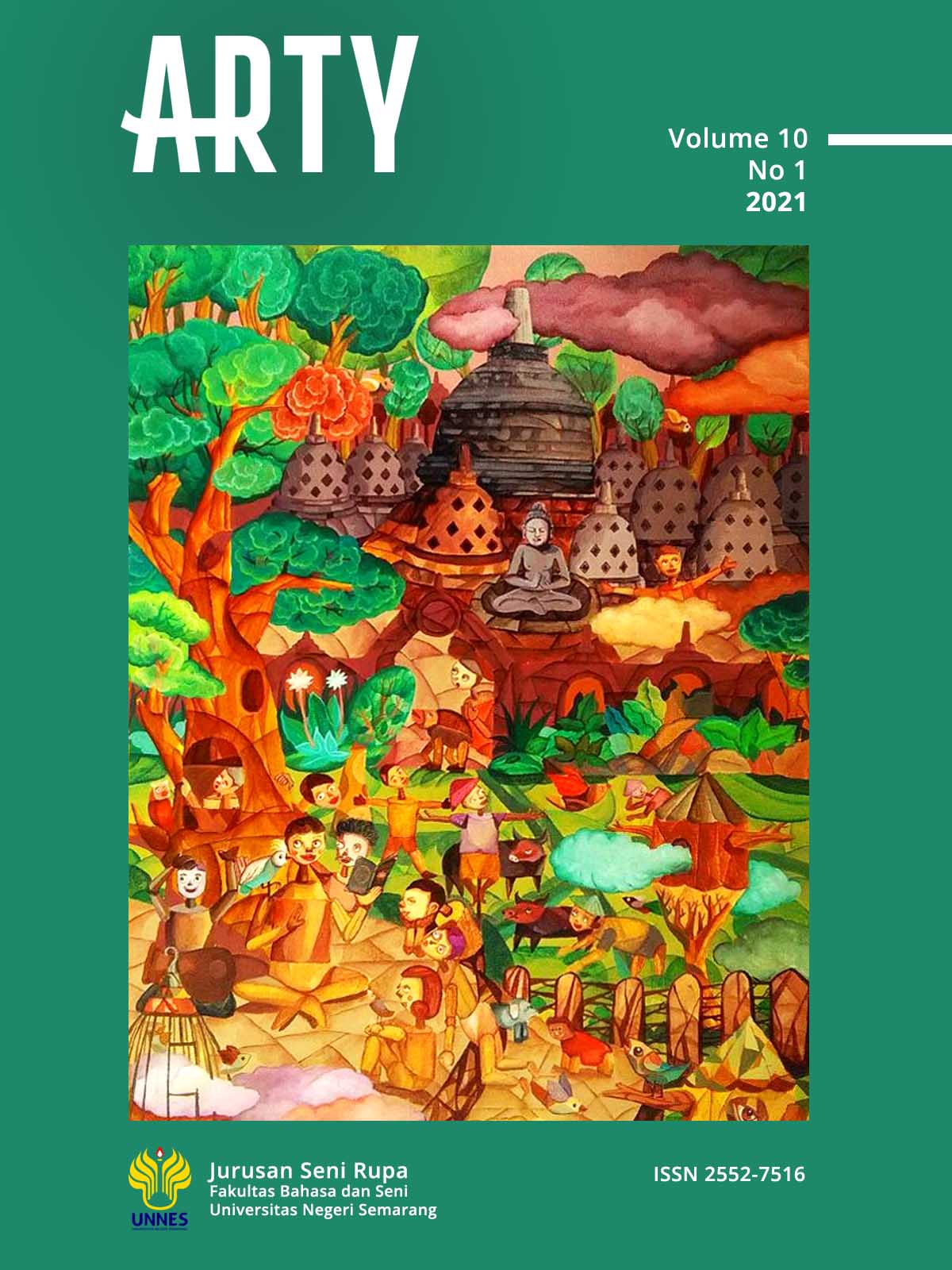DEVELOPMENT OF POTERRY PRODUCTS BASED ON LOCAL CULTURE: APPLICATION OF WOOD CARVING TECHNIQUES AND MOTIVES TO POTTERY CRAFTS IN MAYONG LOR VILLAGE, JEPARA.
Abstract
The research entitled Development of Pottery Products Based on Local Culture: Application of Wood Carving Techniques and Motifs in Pottery Crafts in Mayong Lor Village, Jepara, aims to identify traditional pottery/ceramic forms containing local culture and provide a model of wood carving motifs as a development which contains the conservation values of pottery/ceramic craft designs as a solution to preserve and improve the quality of pottery/ceramic crafts in the village of Mayong Jepara. To achieve the objectives of this research, a Research and Development Research and Development or R&D design will be used. The research problems are: identifying the design of the traditional Mayong Lor pottery/ceramic form and developing it without leaving the local cultural characteristics. Especially in Mayong Lor ceramics, the craftsmen use a mixture of various materials, such as Nalumsari soil mixed with Mayong soil and additional husks. After the soil is processed, the next step is to process it to make ceramics. There are several techniques for making ceramics, such as; (1) Massage Technique (pinching, squeezing, hand-modelled), (2) Spiral Technique (coiling, coil-building), (3) Ring Technique (ring-building), (4) Plate technique (slab-forming), (5) Printing Techniques (moulding, slip-casting), (6) Wheel Techniques (wheel), (7) Combined Techniques, and (7) Paddle-anvil technique (paddle-anvil technique, beater-anvil technique, paddling) . As we know, the development of relief works in the Hindu-Buddhist and Mataram eras in the archipelago was very rapid. People at that time immortalized their expressions in offerings to the power through aesthetics to be merged into an interesting and complex work. In the Hindu-Buddhist era, many of the reliefs were depictions of Rama Shinta, or the journey of the Buddha himself. Then later, these carvings can be modified using pottery that is applied with a specific carving shape so that it functions to decorate and reduce wood cutting. The forms made are; saton, tendrils, tumpal, Mughal, tracapan, patran, waluhan, pineapple an, makutha. In all of these works there are shapes that are inspired by nature. Among them are leaves that harmonize with the shape of leaves and traditional carvings as well as the shape of animals that are full of philosophical values. The finishing process is made by sanding the uneven parts and painting the parts with a shiny color.










